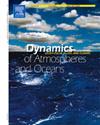伊拉克大尺度气候指数与降雨变率的关系
IF 2
4区 地球科学
Q2 GEOCHEMISTRY & GEOPHYSICS
引用次数: 0
摘要
本文研究了伊拉克气候指数与降雨变率的遥相关关系,以确定影响降雨变率的因素。分析了1951-2020年期间伊拉克8个城市的7个气候指数与降雨量变化之间的相关性,重点分析了该国大多数城市降雨量最高的1月份。采用双变量小波相干性(WTC)和改进的部分小波相干性(IPWC)方法进行分析,并用显著相干性百分比(PoSC)来量化相关性的显著性。该研究旨在确定特定气候指数是否与伊拉克的降雨变率有主要联系,以及这种联系是通过与其他指数的整合(即使用WTC)还是通过消除这些气候指数的相互依赖性(即使用IPWC)来确定的。结果表明,IPWC的PoSC值普遍高于WTC。IPWC的最高PoSC不是通过消除所有气候指数,而是通过选择性地去除某些指数而保留其他指数来实现的。例如,在去除4个气候指数并同时保留SOI和NAO的情况下,3个指数(PDO、AMO、DMI)中的每一个都产生了最高的PoSC。此外,重建的降雨与7个气候指数在不同频带上的相关性解释并证实了删减部分指数而保留部分指数的结果,因为没有一个优势指数可以完全解释降雨的变化。此外,合并后的NAO &;SOI指数被发现是与伊拉克降雨变率的主要联系,特别是当这种组合与任何海温指数相关联时。然而,伊拉克降雨变化的第二个驱动因素是由WeMO和amp;当SOI指数与任何气候指数相联系时。以上发现有助于提高降雨预报的准确性。本研究在伊拉克首次通过多个大尺度气候振荡(LSCO)指数寻找影响降雨变化的驱动因素,对降雨预测、洪水分析和洪水减灾等其他研究具有重要意义。本文章由计算机程序翻译,如有差异,请以英文原文为准。
On the connection between large-scale climate indices and rainfall variability in Iraq
This study investigates the teleconnection between climate indices and rainfall variability in Iraq to identify the factors influencing rainfall variability. The correlation between seven climate indices and rainfall variability across eight Iraqi cities was analyzed for the period 1951–2020, with a focus on January, the month with the highest amount of rainfall for most cities in the country. Bivariate wavelet coherence (WTC) and improved partial wavelet coherence (IPWC) methods were adopted for the analysis, and the significance of the correlations was quantified by the percentage of significant coherence (PoSC). The study aimed to determine whether specific climate indices have major connection with rainfall variability in Iraq, and whether this connection is identified through integration with other indices (i.e. using WTC), or by removing the mutual dependence of these climate indices (i.e. using IPWC). Results indicated that IPWC generally yielded a higher PoSC than WTC. The highest PoSC for the IPWC was achieved not by eliminating all climate indices but by selectively removing certain indices while retaining others. For instance, each of the three indices (PDO, AMO, DMI) produced the highest PoSC by removing four climate indices and keeping both the SOI and the NAO. In addition, the correlation between the reconstructed rainfall and the seven climate indices on different frequency bands explains and confirms the results of deleting some indices and keeping others to gain the greatest revelation on rainfall variability since no single dominant index can fully explain such rainfall variation. In addition, the combined NAO & SOI indices found to be the main connection with rainfall variability over Iraq, especially when this combination is linked to any SST indices. However, the second driver of rainfall variability over Iraq was revealed by the combined WeMO & SOI indices when they are linked to any climate indices. The above findings were found to be helpful and improved the accuracy of rainfall prediction. This study on searching for the drivers that affect the rainfall variation through multiple Large-Scale Climate Oscillation (LSCO) indices is the first in Iraq, and it has importance for other studies such as rainfall prediction, flooding analysis, and flooding mitigation.
求助全文
通过发布文献求助,成功后即可免费获取论文全文。
去求助
来源期刊

Dynamics of Atmospheres and Oceans
地学-地球化学与地球物理
CiteScore
3.10
自引率
5.90%
发文量
43
审稿时长
>12 weeks
期刊介绍:
Dynamics of Atmospheres and Oceans is an international journal for research related to the dynamical and physical processes governing atmospheres, oceans and climate.
Authors are invited to submit articles, short contributions or scholarly reviews in the following areas:
•Dynamic meteorology
•Physical oceanography
•Geophysical fluid dynamics
•Climate variability and climate change
•Atmosphere-ocean-biosphere-cryosphere interactions
•Prediction and predictability
•Scale interactions
Papers of theoretical, computational, experimental and observational investigations are invited, particularly those that explore the fundamental nature - or bring together the interdisciplinary and multidisciplinary aspects - of dynamical and physical processes at all scales. Papers that explore air-sea interactions and the coupling between atmospheres, oceans, and other components of the climate system are particularly welcome.
 求助内容:
求助内容: 应助结果提醒方式:
应助结果提醒方式:


